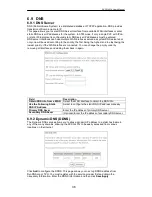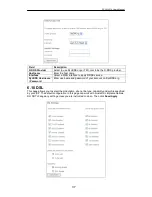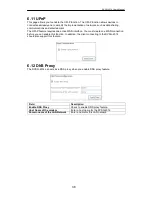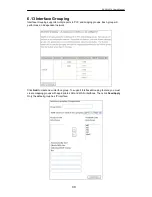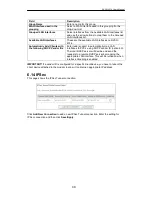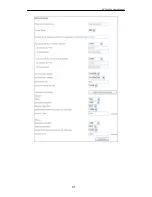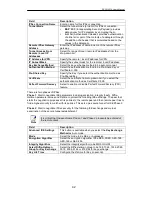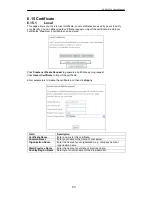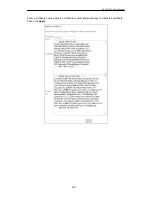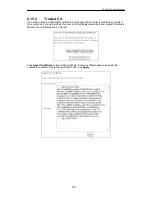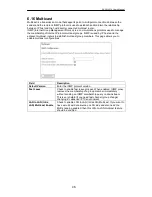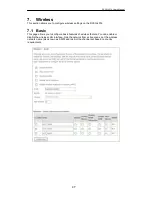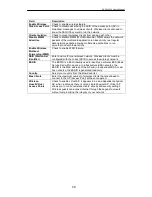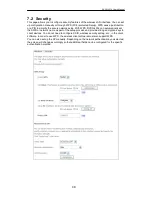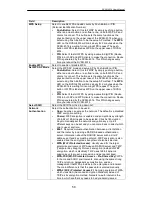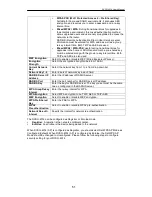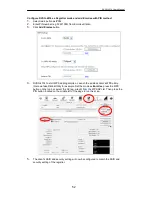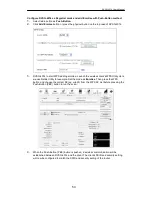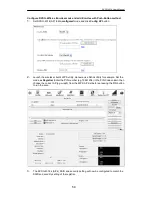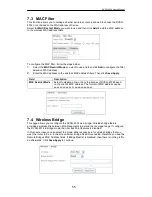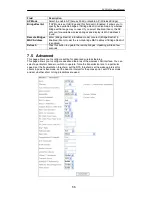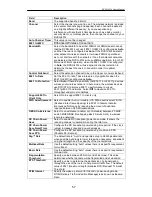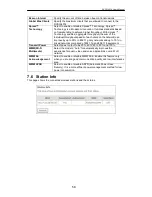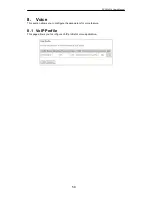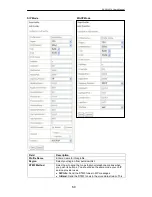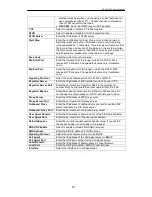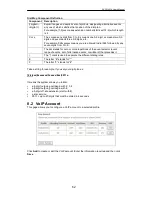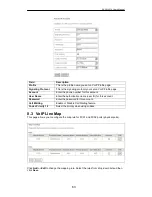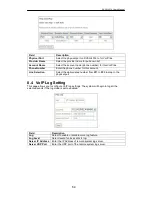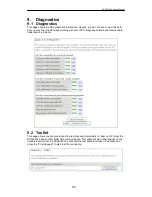
RVSG-4014 User’s Manual
50
Field
Description
WPS Setup
Select to enable WPS and add clients by Push-Button or PIN
(Personal Identification Number).
Push-Button
: Select it to start WSP by simply pushing a button,
either an actual button or a software one, on both WSP AP and
clients to connect. This button acts the same function as the
physical button on the upper case of the RVSG-4014 when you
select using Push-Button to be the setup AP method. The
WPS
LED on the RVSG-4014 will blink slowly for 2 minutes when the
RVSG-4014 is waiting for incoming WPS request. The push-
button of WPS is labeled as WPS on the upper case of RVSG-
4014.
PIN
: Select it to start WPS by using a same 8-digit PIN (Device
PIN) in both AP and WPS clients to make the connection. Device
PIN is generated by the RVSG-4014. This PIN changes every
time you reboot the RVSG-4014.
Enable WPS
Select to enable or disable WPS.
Set WPS AP Mode
Select the WPS AP mode and setup AP by Push-Button or PIN.
Push-Button
: Select it to start WSP by simply pushing a button,
either an actual button or a software one, on both WSP AP and
clients to connect. This button acts the same function as the
physical button on the upper case of the RVSG-4014 when you
select using Push-Button to be the setup AP method. The
WPS
LED on the RVSG-4014 will blink slowly for 2 minutes when the
RVSG-4014 is waiting for incoming WPS request. The push-
button of WPS is labeled as WPS on the upper case of RVSG-
4014.
PIN
: Select it to start WPS by using a same 8-digit PIN (Device
PIN) in both AP and WPS clients to make the connection. Device
PIN is generated by the RVSG-4014. This PIN changes every
time you reboot the RVSG-4014.
Select SSID
Select the SSID from the drop-down list.
Network
Authentication
Select the authentication to be used.
Open
: Anyone can access the network. The default is a disabled
WEP encryption setting.
Shared
: WEP encryption is enabled and encryption key strength
of 64-bit or 128-bit needs to be selected. Click Set Encryption
Keys to manually set the network encryption keys. Up to 4
different keys can be set and you can come back to select which
one to use at anytime.
802.1
: Requires mutual authentication between a client station
and the router by including a RADIUS-based authentication
server. Information about the RADIUS server such as its IP
address, port and key must be entered. WEP encryption is also
enabled and the encryption strength must also be selected.
WPA (Wi-Fi Protected Access)
: Usually used for the larger
enterprise environment, WPA uses a RADIUS server and TKIP
(Temporal Key Integrity Protocol) encryption (instead of WEP
encryption, which is disabled). TKIP uses 128-bit dynamic
session keys (per user, per session, and per packet keys).
WPA-PSK (Wi-Fi Protected Access – Pre-Shared Key)
: WPA
for home and SOHO environments, also using the same strong
TKIP encryption, perpacket key construction, and key
management that WPA provides in the enterprise environment.
The main difference is that the password is entered manually.
WPA2 (Wi-Fi Protected Access 2)
: Second generation of WPA,
which uses AES (Advanced Encryption Standard) instead of
TKIP as its encryption method. Network re-auth interval is the
time in which another key needs to be dynamically issued.
Summary of Contents for RVSG-4014
Page 24: ...RVSG 4014 User s Manual 21 ...
Page 44: ...RVSG 4014 User s Manual 41 ...

